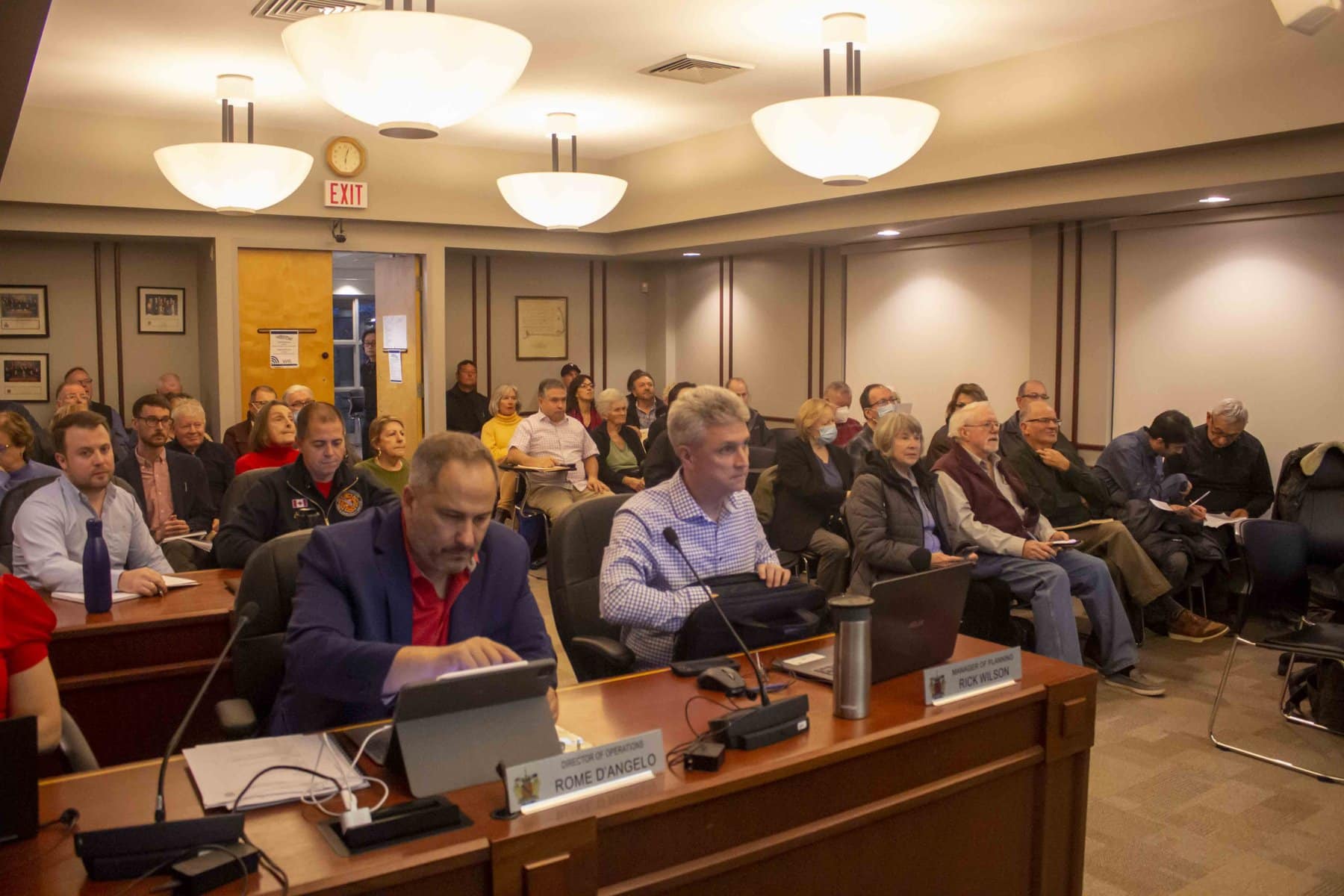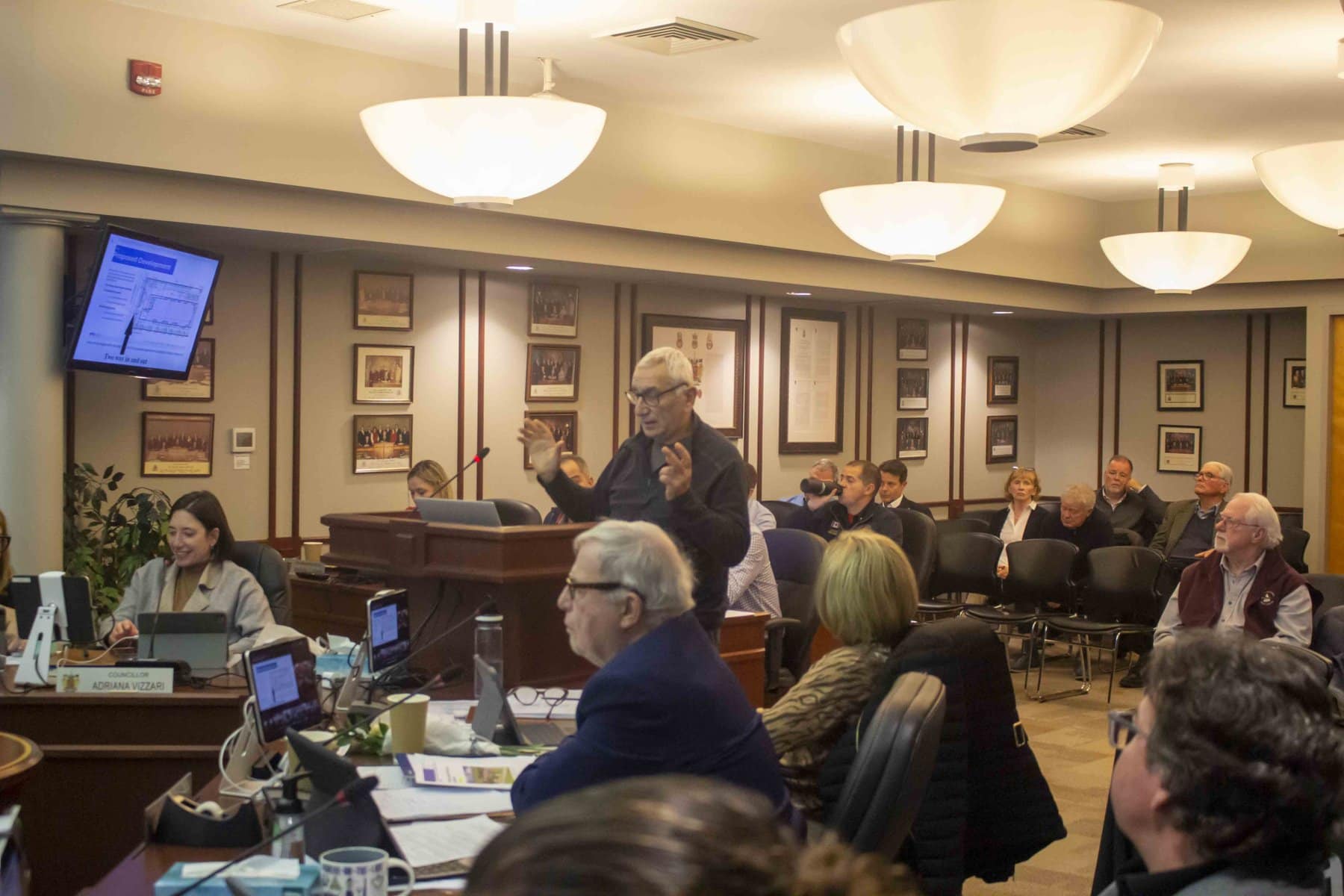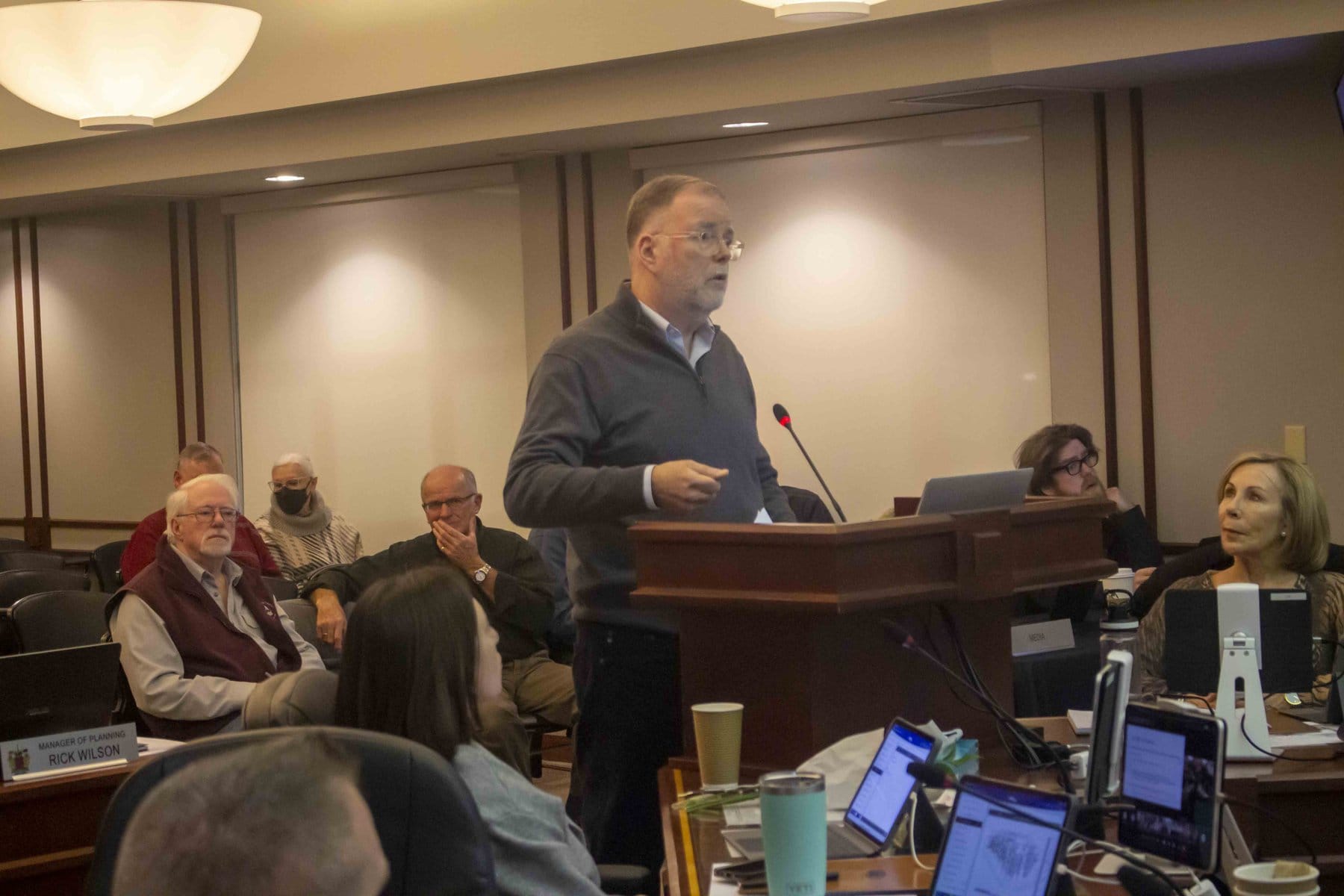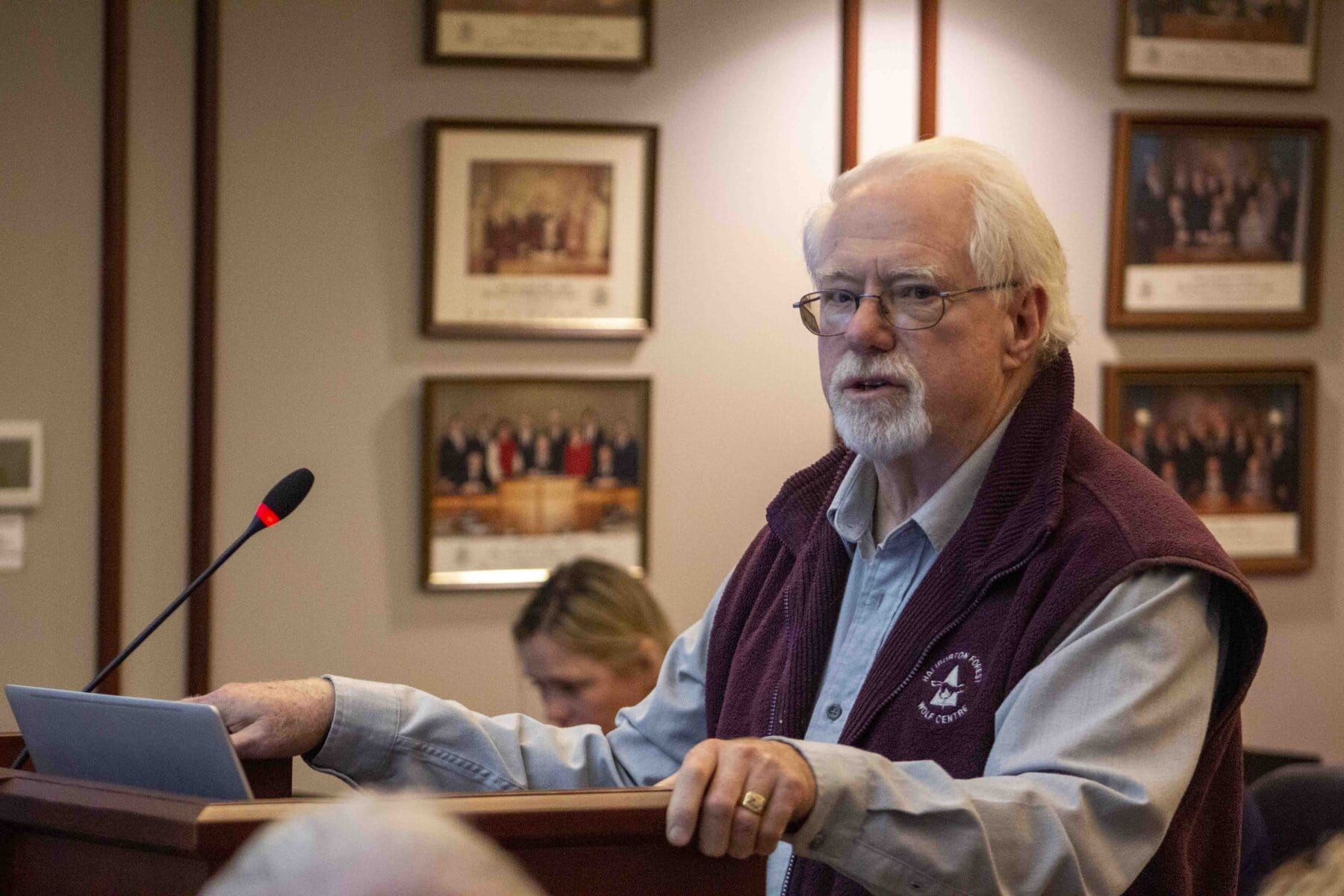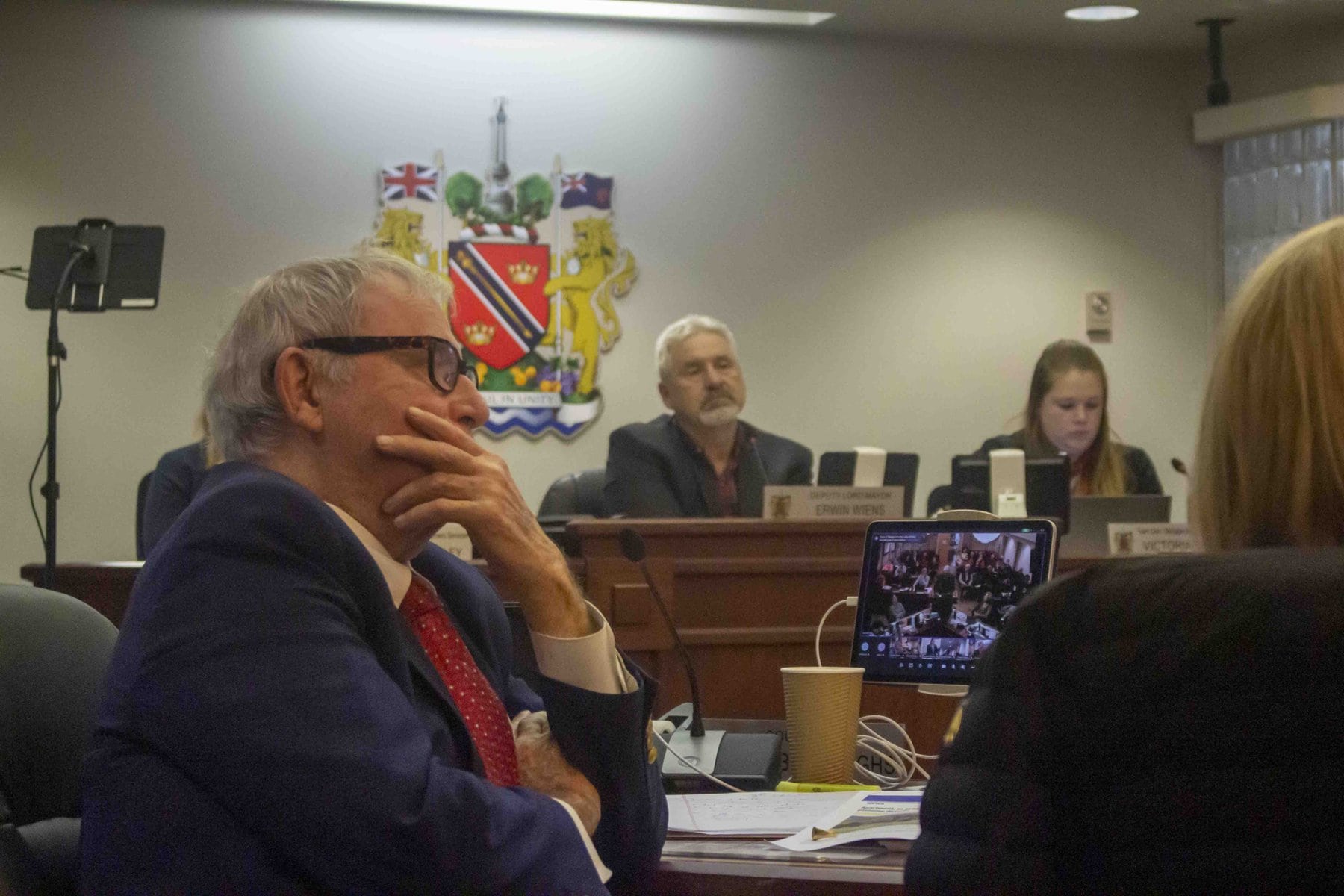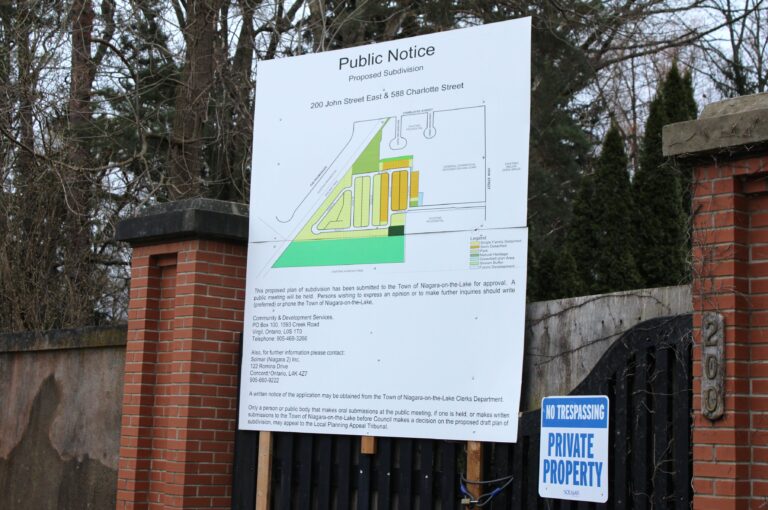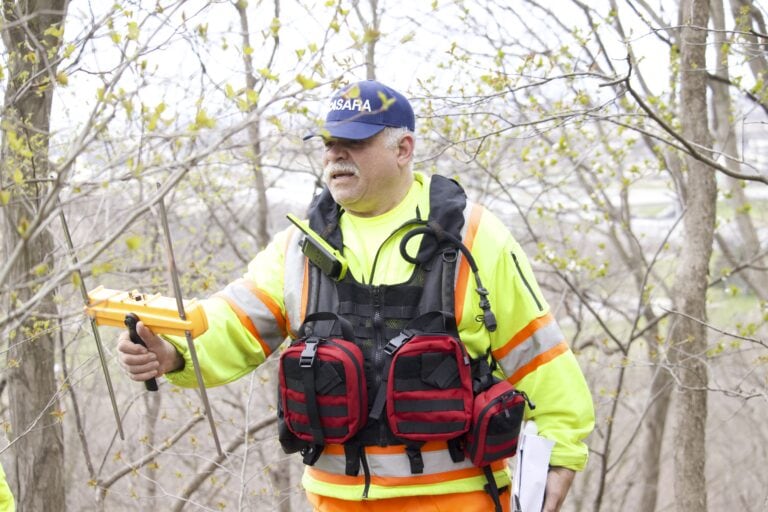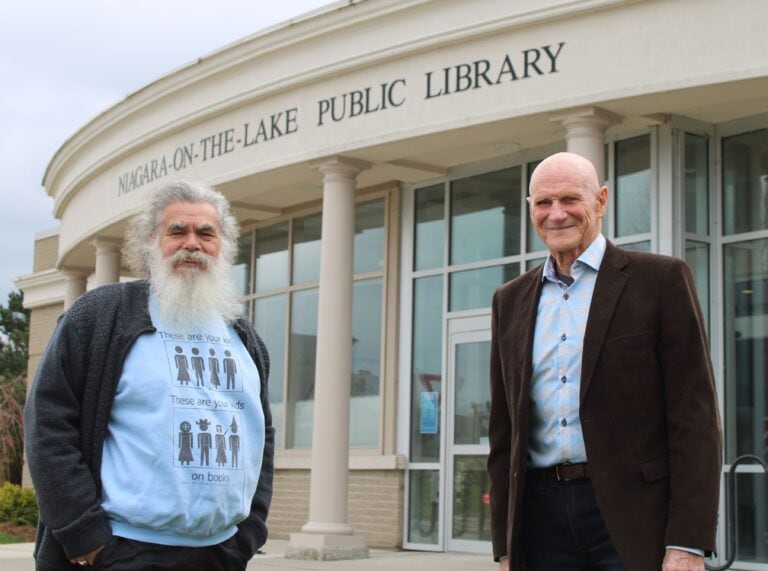Niagara-on-the-Lake residents came out in force this week to tell proponents of a new apartment building on the edge of Old Town that they are opposed to the idea.
More than 50 people came out to strongly voice their displeasure with what the owners say will be a 3.5-storey rental building at 223-227 Mary St.
“If this gets approved, we can literally say goodbye to what’s so special about where we live,” Richard Ellis, who lives on William street, told Tuesday night’s committee of the whole meeting planning meeting.
Ellis and his husband “spent our life savings to buy our forever home in Old Town” and he said they never would have bought it if they’d known about the proposed apartment.
The Lake Report broke the news of the building proposal last month after residents raised concerns over the building’s height and character, as well as the amount of traffic and noise pollution it would bring to the intersection of Mary Street and Niagara Stone Road.
On Tuesday, speaker after speaker brought up those issues but a few also pointed out problems with the proposal, which is being headed by NPG Planning Solutions.
Lichheng Lim, an NPG planner, said the property is an ideal location for higher-density development because of its proximity to commercial services.
She also said increased setbacks from adjacent lots, sloped roofs and trees would help to reduce privacy worries and noise pollution.
“It’s not going to help,” said Ramiz Baykara, who lives nearby on Simcoe Street.
The planners from NPG also provided a shadow study with their proposal.
The shadow study measures shadow cast from 9 a.m. to 3 p.m. for Sept. 22, June 21, March 20 and Dec. 21.
“There are minor impacts with respect to shadowing,” Lim said.
Keith Kennedy, who lives on Mary Street, argued that the shadow study prepared by the planners was too small, having only covered six hours.
He shared a study he conducted which showed the shadowing effects of the building from sunrise to sunset on various days of the year.
He argued that the planners would get more accurate data if they conducted the study for entire days.
Kennedy’s research showed that the shadows cast in the hours outside NPG’s study are much longer than those in the study.
“Let’s keep it simple, let’s do what we’ve done elsewhere in Niagara-on-the-Lake,” he said. “Maybe there’s a two-storey alternative with six units in that space.”
Lim said a traffic study from 2014 showed that there would be “no issues in traffic volumes as a result of the proposed development,” but the residents had problems with this, too.
Baykara described the nine-year-old traffic report as being from the “stone age” and argued it was too old to be reliable.
He was also one of several to argue that the study did not account for seasonal increases in traffic due to tourism.
“This is a stupid plan,” Baykara said.
He said the entrance to the building’s underground parking garage was “at most” three car-lengths from the traffic light at Niagara Stone Road.
Any cars turning left into the lot would slow traffic at the intersection, he said.
Almost two weeks ago, at an open house, NPG planners heard concerns from residents about the impact on heritage but Lim argued Tuesday night that the development is not in a heritage-designated district or next to a designated property.
Lyle Hall, speaking on behalf of the Niagara Foundation, brought a streetscape study to council which superimposed the shapes of the existing houses in the area onto the sketches of the proposed building.
It showed the apartment will be almost three times as high as the lowest bungalows on the block.
“The building will clearly tower over its neighbours,” Hall said.
The study Hall brought to council identified 19 different ways in which the proposal was incompatible with the surrounding area.
He said the building will be about as tall as the Queen’s Landing Hotel.
Hall was interested in expanding the boundaries of the town’s heritage district to include Mary Street.
This would make it more difficult for developers to build higher-density buildings in the area.
The councillors had far fewer concerns than the residents.
Lord Mayor Gary Zalepa asked what the town can do to attract more affordable properties.
“I can’t help but be aware of the core housing need in Niagara-on-the-Lake,” Zalepa said.
There is a “significant population” that does not have the means of “acquiring core housing,” he said.
“There’s an appetite for getting appropriate density in appropriate locations in the town,” he said.
Despite the degree of pushback on the proposal, the mayor said it was “helpful for people to understand that process” and to “bring their comments forward” at public meetings.
Asked how he felt about the proposal, Zalepa said, “I don’t have all the facts.”
“We’re here to listen. It’s not time for me to have a judgment.”



